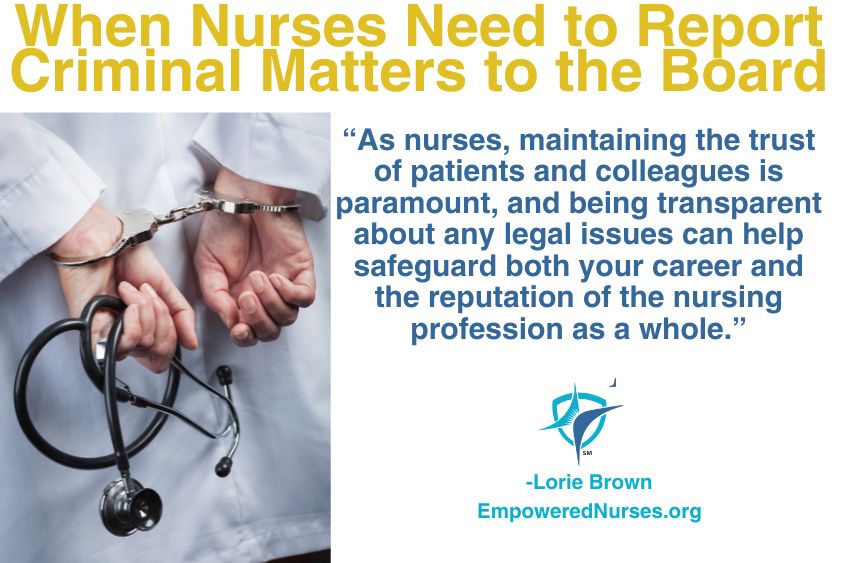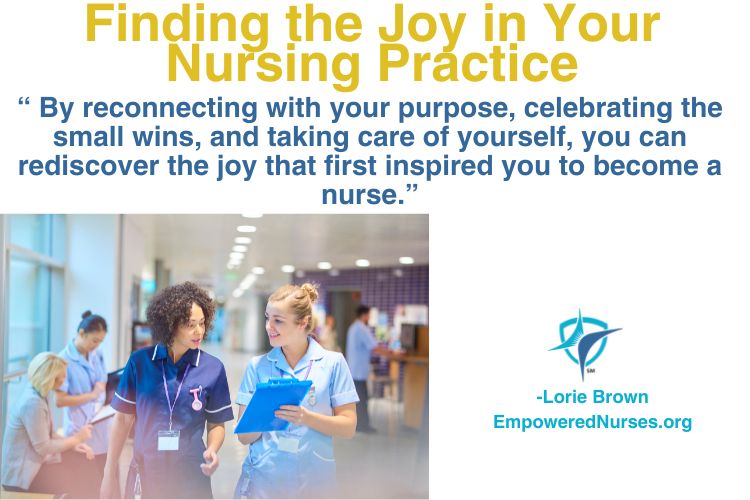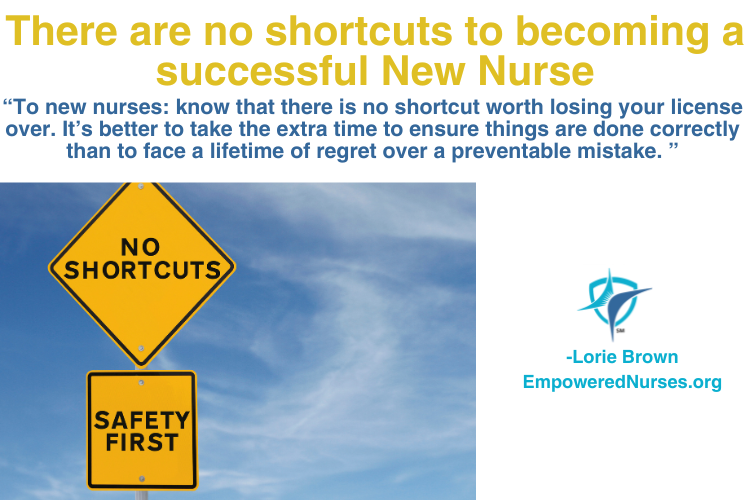When Nurses Need to Report Criminal Matters to the Board
Leave a Comment
In the healthcare profession, nurses hold positions of trust and responsibility. This trust extends not only to patient care but also to upholding the ethical and legal standards that govern their profession. You are a nurse 24/7 and are held to ethical standards whether at work or personal life. One key legal responsibility is self-reporting criminal matters to the appropriate nursing board or regulatory body. Failing to do so can result in severe disciplinary actions, including license suspension or revocation. But when exactly does a nurse need to report criminal offenses, and what are the timelines for doing so?
Understanding the Obligation to Self-Report
Each state has its own regulations for when healthcare providers, including nurses, must self-report criminal matters. The types of reportable offenses can range from misdemeanors to felonies, with timelines that vary from state to state. The requirement to report is typically triggered by charges, convictions, or any legal action against the nurse. Some states require you to report a conviction even if your license is expired.
Below are some general guidelines and a breakdown of specific state requirements:
General Rules for Self-Reporting:
1. Charges or Arrests: In some states, nurses must report arrests, not just convictions, especially if the offense is related to the healthcare profession, such as drug use or theft.
2. Convictions: Most states require nurses to report both felony and misdemeanor convictions. These may include DUIs, assault, fraud, or other crimes that could impact their ability to provide care. All convictions must be reported.
3. No-Contest Pleas: Even if the nurse doesn’t admit guilt but enters a no-contest plea, this still requires self-reporting in most jurisdictions.
4. Disciplinary Actions in Other States: Some states require reporting if the nurse is disciplined in another state for criminal behavior.
State-Specific Timelines for Reporting
· Alabama: Must notify the board within 30 days of any criminal action (Ala. Code § 34-24-59).
· Arizona: Requires reporting within 10 working days if charged with a misdemeanor or felony (A.R.S. § 32-3208).
· California: Requires self-reporting of any indictment or conviction of a felony or misdemeanor within 30 days(Cal Bus & Prof Code § 802.1).
· Florida: Nurses must report any criminal conviction, guilty plea, or no-contest plea within 30 days (Fla. Stat. § 456.072(1)(x)).
· Indiana: Nurses are allowed up to 90 days to report a criminal conviction (Burns Ind. Code Ann. § 25-1-1.1-1).
· Wisconsin: Has one of the shortest timelines, requiring nurses to report any conviction within 48 hours of judgment (Wis. Stat. § 440.03).
What Happens if You Don’t Report?
Failure to report within the designated time can result in severe penalties, including:
· License suspension or revocation
· Fines
· Reprimands or probation
· Permanent mark on your professional record
The penalties depend on the severity of the crime and the board’s discretion. Even if the criminal offense seems minor, it is always better to err on the side of transparency to protect your career and reputation by reporting.
Best Practices for Self-Reporting
1. Know Your State Laws: Keep updated on your state’s nursing board regulations regarding self-reporting. If you’re unsure, contact the board or consult a legal expert.
2. Be Prompt: Reporting within the required timeframe shows professionalism and accountability, which may help during any subsequent board investigation.
3. Keep Records: Document any communication you have with law enforcement or legal representatives related to the offense, as well as your notification to the board. Do not talk to anyone without your attorney present.
4. Consult an Attorney: If you are unsure about how or when to report, seek legal advice to ensure you meet your state’s requirements.
Conclusion
Self-reporting criminal matters is not only a legal obligation but an ethical one. As nurses, maintaining the trust of patients and colleagues is paramount, and being transparent about any legal issues can help safeguard both your career and the reputation of the nursing profession as a whole. Always familiarize yourself with your state’s laws, and when in doubt, report as soon as possible.











